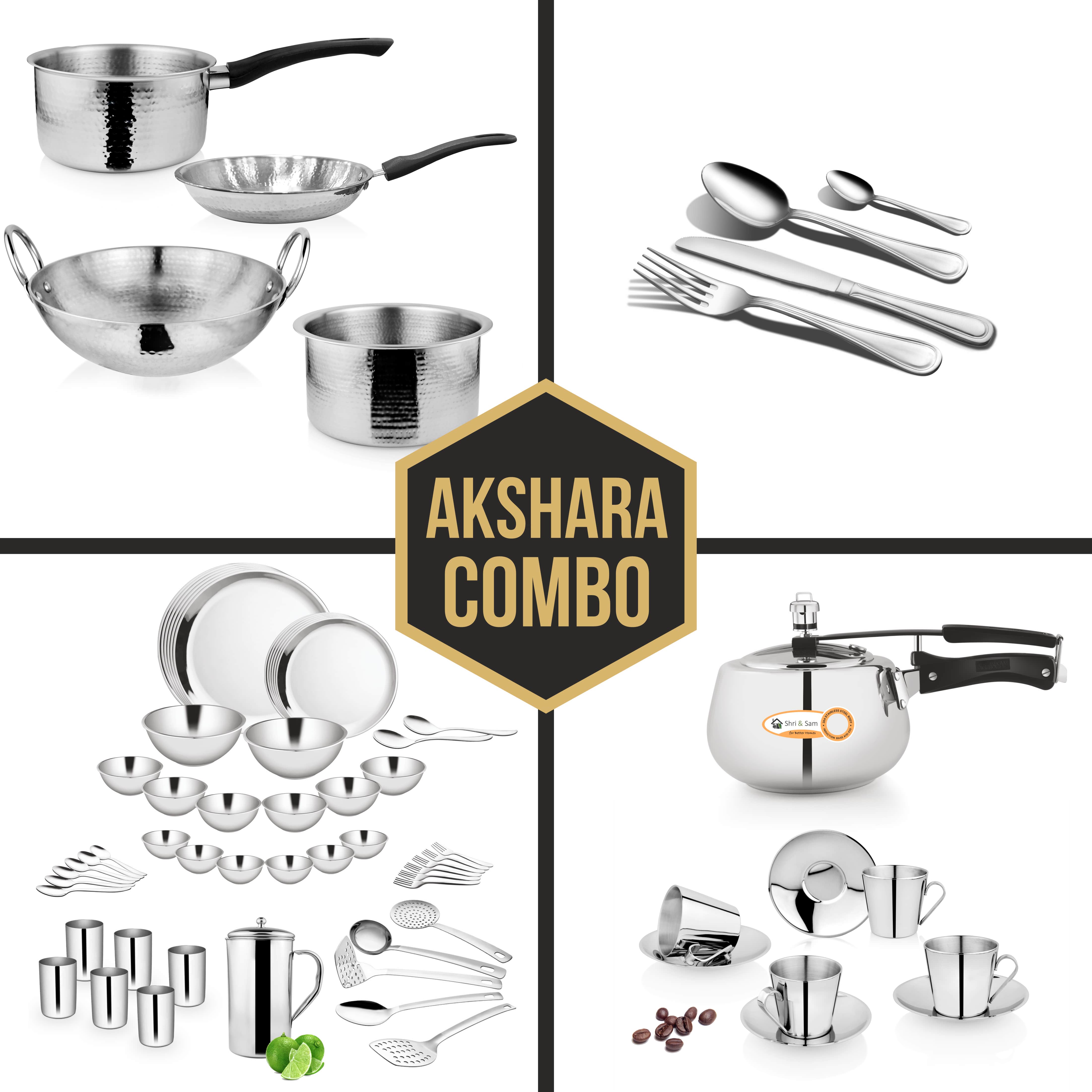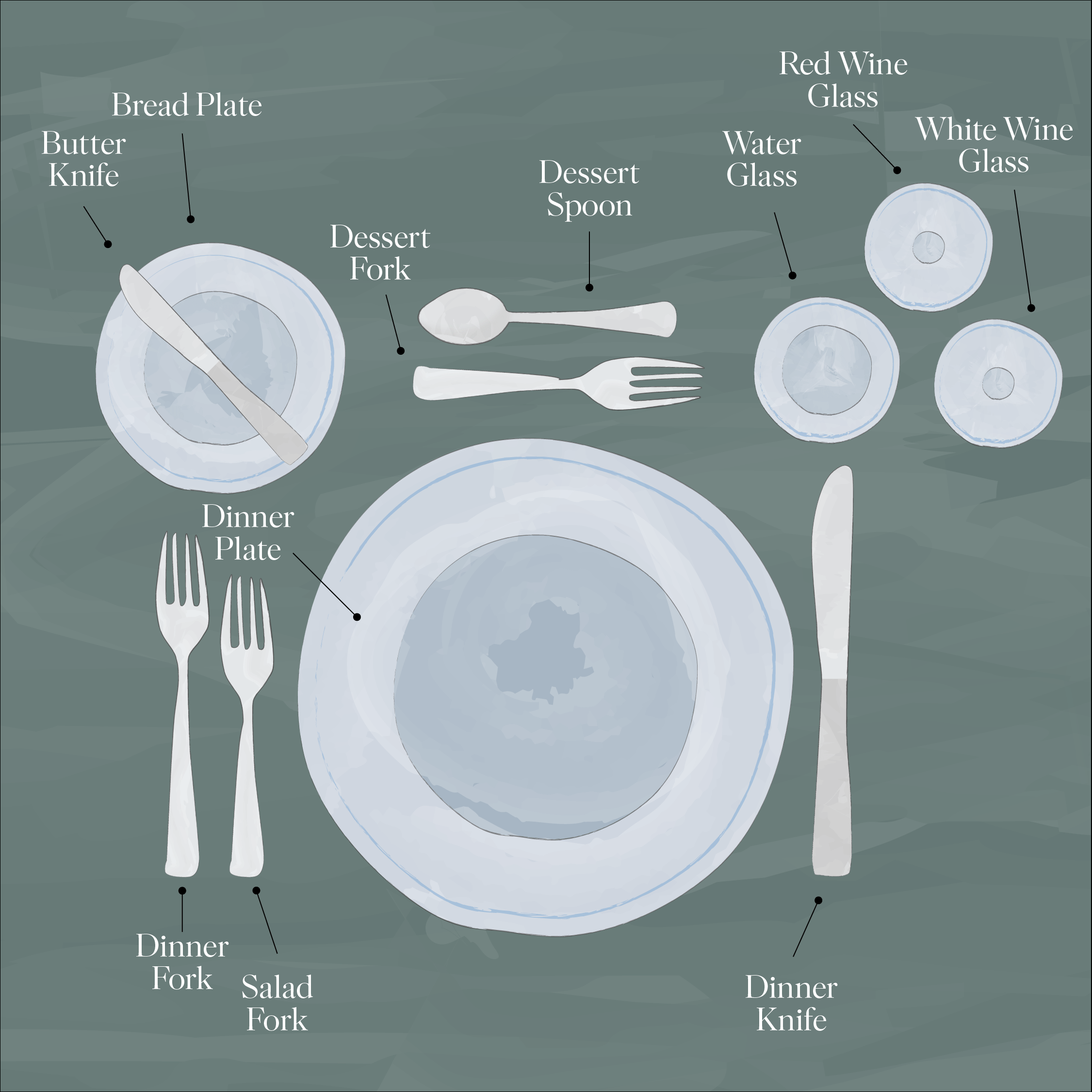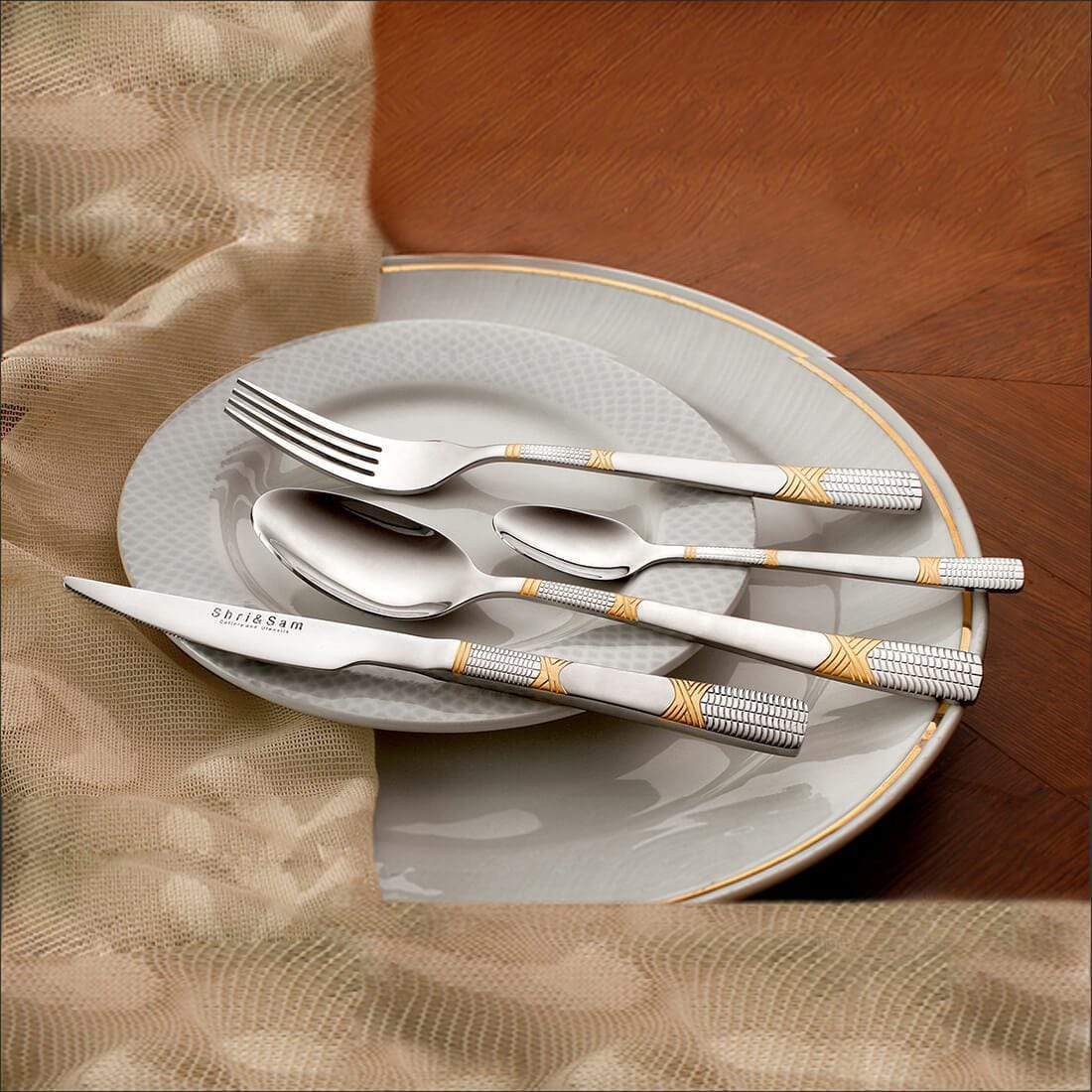
Health is a choice, always go with stainless steel
Benefits and risks of cookware materials
Pots, pans and other cookware are made from a variety of materials. These materials can enter the food that we cook in them. Most of the time, this is harmless. However, care should be taken with some materials.
Aluminum
Aluminum is lightweight, conducts heat well and is fairly inexpensive, making it a popular choice for cooking. While aluminum has been associated with Alzheimer's disease, there is no definite link proven. The World Health Organization estimates that adults can consume more than 50 milligrams of aluminum daily without harm. During cooking, aluminum dissolves most easily from worn or pitted pots and pans. The longer food is cooked or stored in aluminum, the greater the amount that gets into food. Leafy vegetables and acidic foods, such as tomatoes and citrus products, absorb the most aluminum.
Anodized aluminum cookware
When aluminum is placed in an acid solution and exposed to an electric current, a layer of aluminum oxide is deposited on the surface of the aluminum. This process is called anodization. Anodized aluminum cookware conducts heat as well as ordinary aluminum, but has a hard, non- stick surface which makes it scratch-resistant, durable, and easy to clean. Anodization also reduces leaching of aluminum from cookware into foods, particularly acidic foods like tomatoes and rhubarb.
Copper
Copper conducts heat well, making it easy to control cooking temperatures. Brass, made from copper and zinc, is less commonly used for cookware. Small amounts of copper are good for everyday health. However, large amounts in a single dose or over a short period can be poisonous. It is not certain how much can be safely taken each day.
Because of this, copper and brass pans sold in Canada are coated with another metal that prevents the copper from coming into contact with food. Small amounts of the coating can be dissolved by food, especially acidic food, when cooked or stored for long periods. Coated copper cookware can lose its protective layer if scoured. In the past, tin and nickel were sometimes used in coating copper cookware. Such cookware should be used for decorative purposes only. Anyone allergic to nickel should particularly avoid nickel-coated cookware.
Stainless steel and iron cookware
Stainless steel, made from iron and other metals, is strong and resists wear and tear. It is inexpensive, long-lasting and the most popular cookware in North America. The metals used in stainless steel or iron cookware which may produce health effects are iron, nickel and chromium. Iron is essential to produce red blood cells. Large amounts can be poisonous, but in North America, we are more likely to lack iron than have too much. Iron cookware provides less than 20% of total daily iron intake - well within safe levels. Nickel is not poisonous in small quantities but it can provoke a reaction in people allergic to nickel. The average adult consumes between 150 to 250 micrograms of nickel per day. Using corrosion-resistant nickelcontaining stainless steel cookware, even for cooking acidic foods such as rhubarb, apricots or tomatoes, will not add significant amounts of nickel to the diet.
Small doses of chromium, like iron, are good for your health, but they can be harmful in higher amounts. The safe intake range is about 50 to 200 micrograms per day, what most Canadians take in. One meal prepared with stainless steel equipment gives you about 45 micrograms of chromium, not enough to cause concern.
Ceramic, enamel and glass
Ceramic (pottery), enamel or glass cookware is easily cleaned and can be heated to fairly high temperatures. Ceramic cookware is glazed; similar glazes are applied to metals to make enamelware. These glazes, a form of glass, resist wear and corrosion. The only health concern about using glassware or enamelware comes from minor components used in making, glazing, or decorating them, such as pigments, lead, or cadmium. These materials are harmful when taken into the body, so the risk of them entering food is controlled during the manufacturing process. In Canada, glazed ceramics and glassware are regulated and cookware made of these materials can not be sold, advertised or imported if it releases more than trace amounts of lead and cadmium. Products having greater than the allowable levels of lead and cadmium must be identified by a label indicating the presence of lead and/or cadmium, or by a design feature such as a hole or a mounting hook, indicating that they should not be used for food. Some countries do not have the same strict lead and cadmium limits as Canada. If you bring in glazed ceramic cookware from abroad, be aware that it may not meet Canadian permitted levels for lead and cadmium.
Plastics and nonstick coatings
For cooking and storing food, plastic is lightweight and nearly unbreakable. Many containers have been made for use in microwave ovens, where metal cookware is not suitable. Using plastic containers and wrap for anything other than their original purpose can cause health problems. With wrap, the concern is that food may absorb some of the plasticiser, the material that helps make it flexible. This is most likely to happen at high temperatures, when microwaving, or with fatty or oily foods such as cheese and meat. Nonstick coatings are applied to metal utensils to prevent food from sticking and to protect cookware surfaces. An independent science review panel in the has recommended that perfluorooctanoic acid and its salts () be considered "likely to be carcinogenic" based on laboratory studies in rats. The U.S. Environmental Protection Agency () has also determined that is 'likely' to cause cancer in rats. However, this does not necessarily mean that causes cancer in humans. is widely used in the manufacture of non-stick coatings. does not remain in cookware or other products after manufacture, but it has spread throughout the natural environment worldwide. In 2006, the chemical industry voluntarily agreed to a U.S. plan to reduce and eventually eliminate the release of into the environment and to reduce and eliminate any content in products. There is no risk of exposure to from using cooking utensils and equipment with non-stick coatings. Nonstick coatings are a risk if they are heated to temperatures greater than 350 or 650. This might happen if an empty pan is left on a burner. In this case, the coatings can give off irritating or poisonous fumes.
Silicone cookware
Silicone is a synthetic rubber which contains bonded silicon (a natural element which is very abundant in sand and rock) and oxygen. Cookware made from food grade silicone has become popular in recent years because it is colorful, nonstick, stain-resistant, hard-wearing, cools quickly, and tolerates extremes of temperature. There are no known health hazards associated with use of silicone cookware. Silicone rubber does not react with food or beverages, or produce any hazardous fumes.
Minimizing your risk
- Do not cook or store food for long periods of time in aluminum cookware.
- Do not use badly scratched or un-coated copper cookware to cook or store food. If you do have some older tin or nickelcoated cookware, use it for decorative purposes only. Do not scour coated copper cookware.
- If you know you are allergic to nickel, do not use nickel-plated cookware.
- If you are sensitive to nickel and are having difficulty managing your allergy, discuss options with your doctor. Foods known to contain higher levels of nickel include oats and oat products, peas, beans, lentils and cocoa products, such as chocolate, particularly dark chocolate.
- Do not store foods that are highly acidic, such as stewed rhubarb or stewed tomatoes, in stainless steel containers.
- If you bring in glazed ceramic cookware from abroad, be aware that it may not meet Canadian permitted levels for lead and cadmium. Do not use it to serve or store food. Use it for decoration only.
- Don't use plastic bowls or wrap in the microwave unless they are labelled as microwave safe.
- If you reuse plastic items for storage, such as dairy product containers, let the food cool before storing, then refrigerate it immediately. Avoid visibly damaged, stained or unpleasant smelling plastics and containers. Never heat or store food in plastic containers that were not intended for food.
- Do not use silicone cookware at temperatures above 220 (428) as it will melt if exposed to high temperatures. You should also be careful when removing hot foods from flexible silicone cookware, as the food may slide out very quickly.



Leave a comment
This site is protected by hCaptcha and the hCaptcha Privacy Policy and Terms of Service apply.